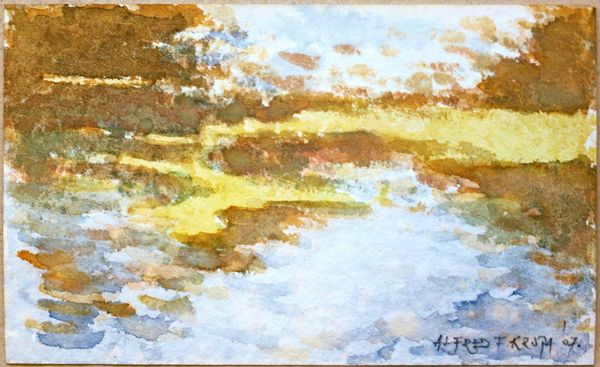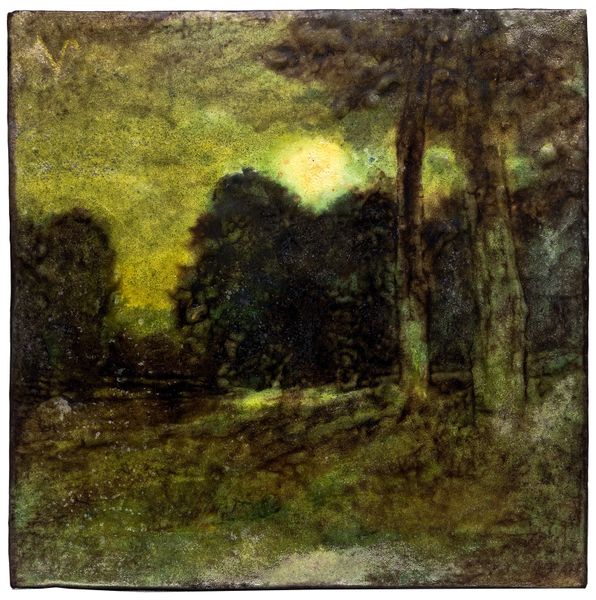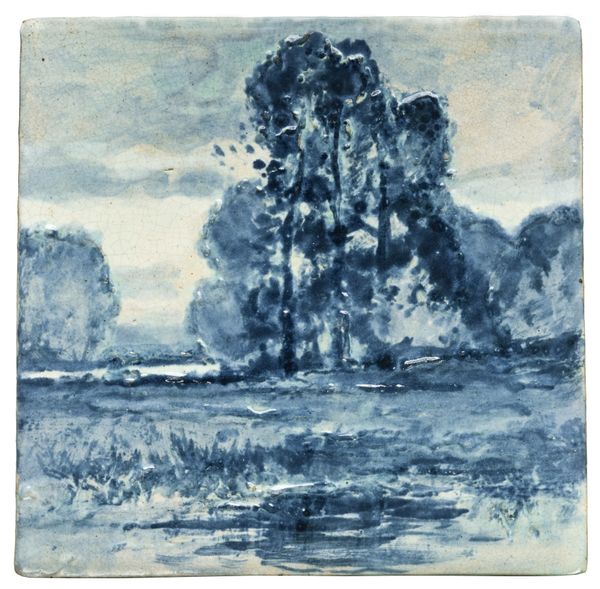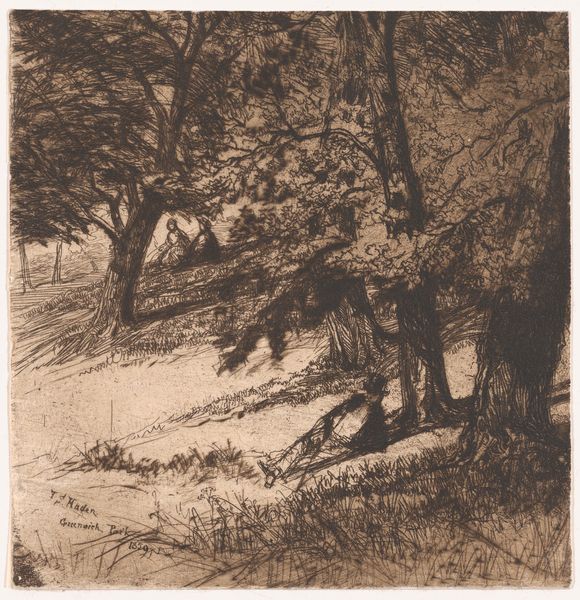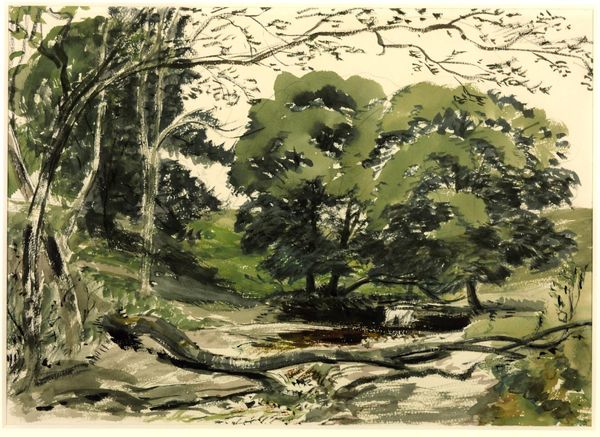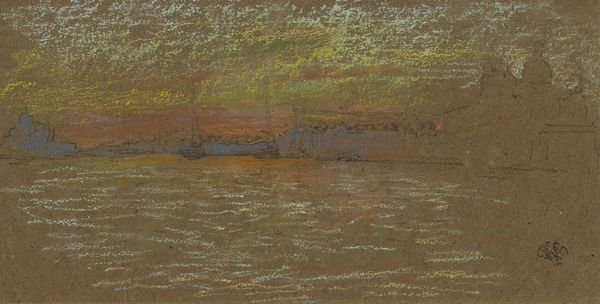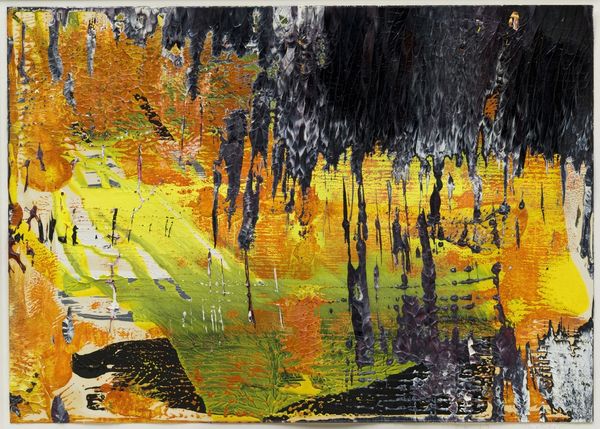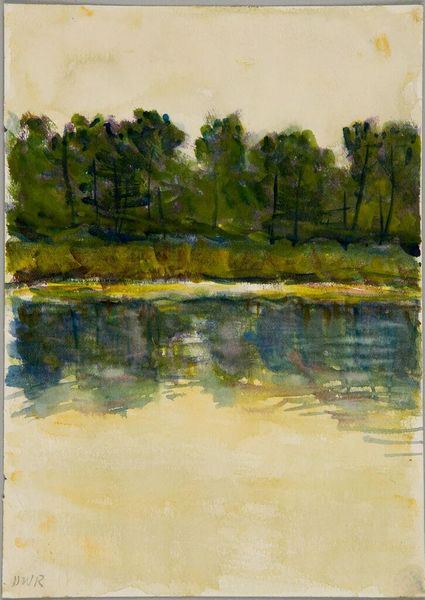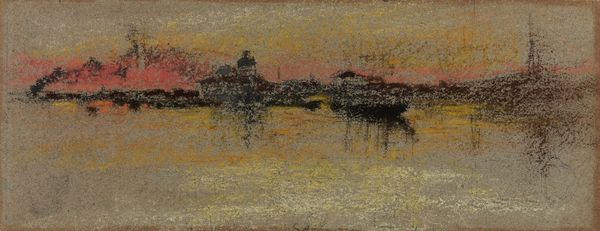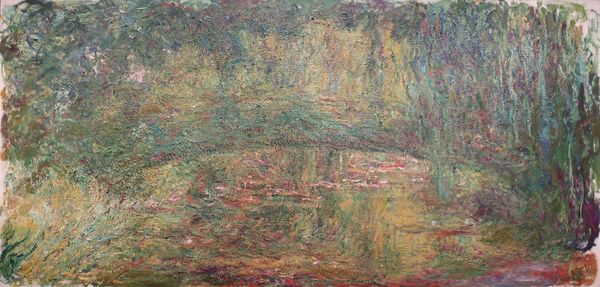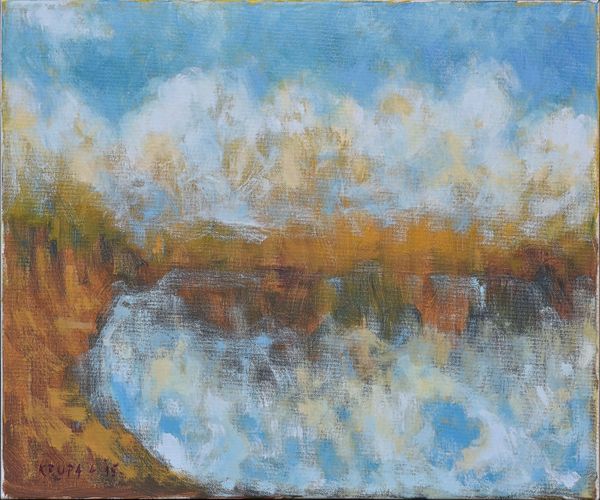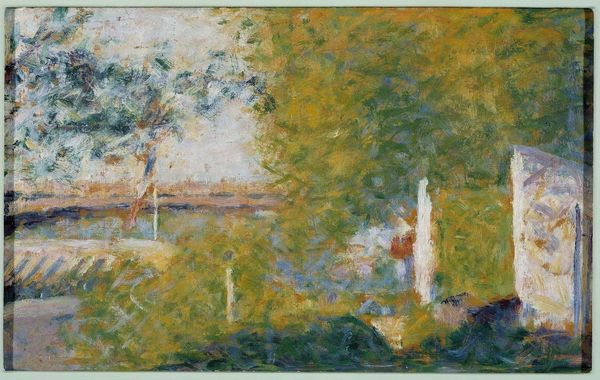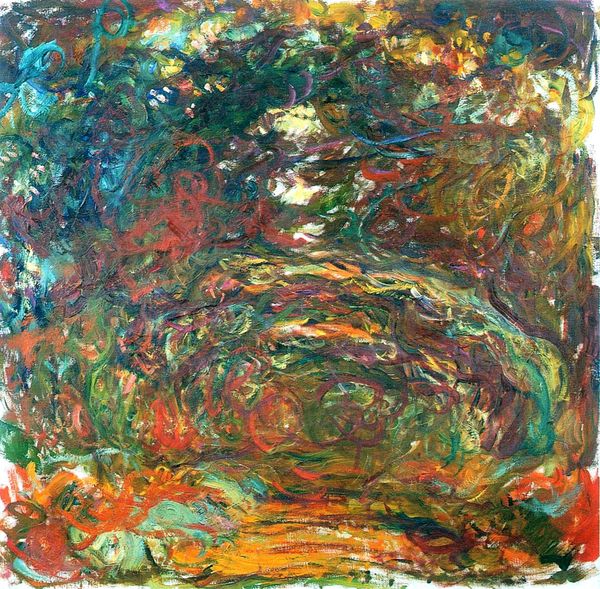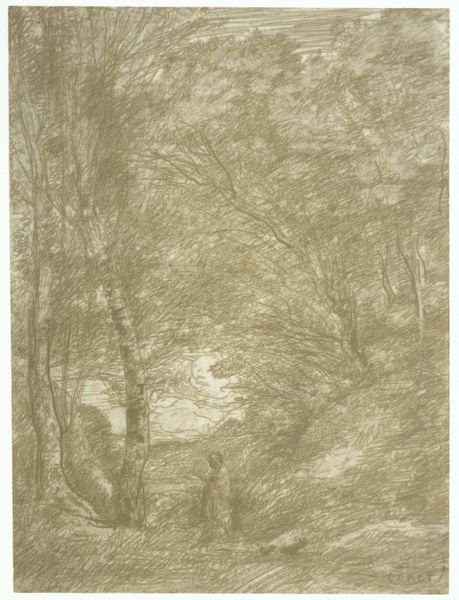
ceramic, terracotta
#
arts-&-crafts-movement
#
landscape
#
ceramic
#
united-states
#
terracotta
Dimensions: 8 1/4 x 8 3/8 x 13/16 in. (21 x 21.3 x 2.1 cm)
Copyright: Public Domain
Curator: Here we have an intriguing piece: a terracotta tile, created by Charles Volkmar sometime between 1897 and 1917. Editor: It feels like stepping into a dream. The textures and colors, the amber light, it is like looking through a pane of very old glass. Curator: Volkmar was deeply involved in the Arts and Crafts movement, and this tile really exemplifies some of its key philosophies. We see a handcrafted object, prioritizing aesthetic value and everyday function, in direct opposition to industrialized production. The subject matter is also relevant; the rendering of a landscape nods to the growing interest in nature preservation. Editor: Precisely. The fact that it’s a landscape—so tied to notions of purity, escape, and untouched wilderness at the time—renders the use of craft even more meaningful. The labor is visible; it's tangible. Think about the debates swirling then – immigration, urbanization…This romantic vision harkens to simpler, more authentic values in opposition to all that. Who was the target consumer, I wonder? Curator: That’s a good question. Most likely someone among the burgeoning middle class who was looking for alternatives to mass-produced items. People seeking to signal that their values aligned with a slower pace of life, even as they were participating in the expansion of industrial capitalism. A seeming paradox we see throughout the Arts and Crafts movement. Editor: It's an idyllic scene, with those stylized trees silhouetted against what could be sunset... or perhaps the promise of something else entirely. Given when this was made and considering Volkmar’s position as a white male artist, it may be easy to critique the simplification, maybe even sanitization, of labor. But I wonder how contemporary consumers responded to this type of image. Curator: Indeed. And it makes you wonder if, back then, viewers found comfort in the scene or if they found it dull precisely for what it lacks: explicit messaging. What strikes me the most is the materiality – that terracotta gives it this raw and almost archaic presence. Editor: It does. You know, engaging with pieces like this makes me think about the legacy of craftsmanship, and how we can support ethical artistic practices in our present moment. Curator: And for me, it brings into sharper focus the push and pull between the values we publicly profess and the socioeconomic realities that influence our consumption.
Comments
No comments
Be the first to comment and join the conversation on the ultimate creative platform.
